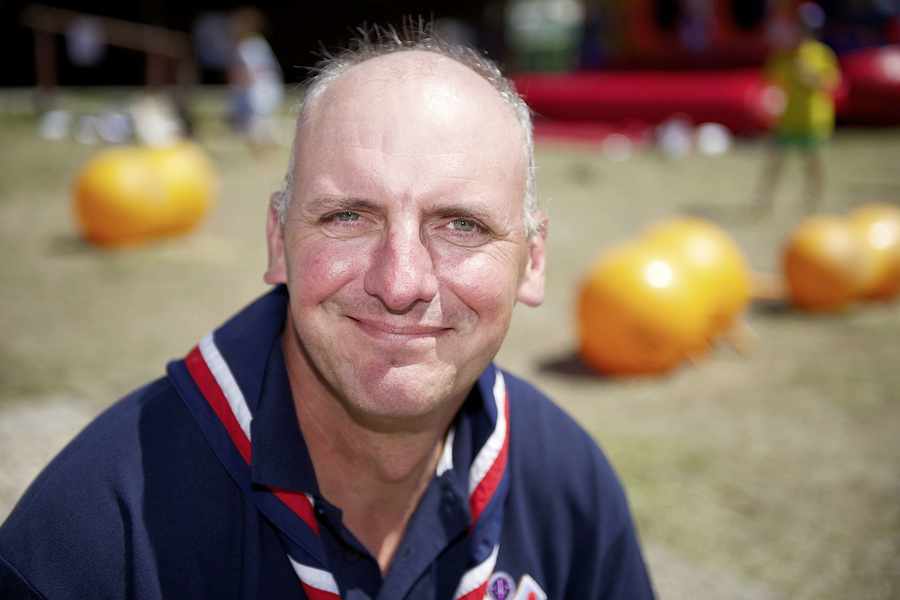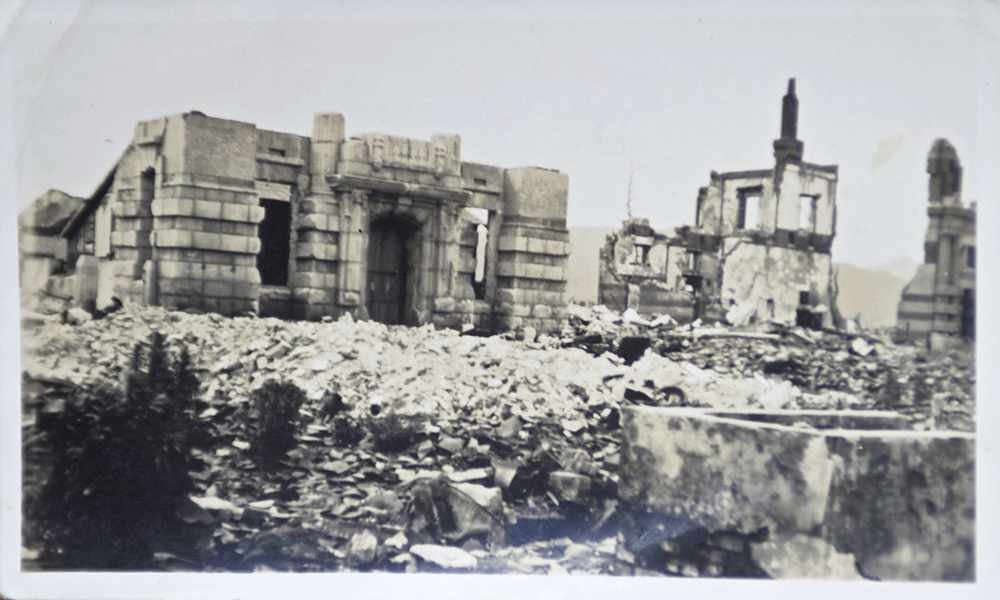- Jersey Scouts and Girl Guide heading to World Scout Jamboree
- They will join 30,000 teenagers from across the globe
- What is the Jamboree? Find out more and watch videos below
- Read about Scout leader Greg Ruellan’s personal pilgrimage
TEN young Islanders were today due to embark on the trip of a lifetime to Japan, where they will join 30,000 teenagers from across the globe at the 23rd World Scout Jamboree.
The nine explorer Scouts and one Girl Guide have spent the past two years doing odd jobs and a variety of activities to raise the money to go on the trip, as well as learning about Japan, its culture, food and customs.
The jamboree is held every four years and this year the event will take place from 28 July to 8 August at Kirara-hama.
As it coincides with the 70th anniversary of the dropping of the first atomic bomb on nearby Hiroshima on 6 August, selected Scouts will be invited to the official commemoration and there will be day trips to the city for all those attending.
Tom Morris, a 17-year-old De La Salle student, said he was looking forward to the trip.
‘Coming from Jersey, it is going to be quite an experience,’ he said. ‘London is big but this is Tokyo.
‘There will be 30,000 going from 147 countries, so we will have the opportunity to meet so many people.’

Activities at the jamboree – which is aimed at giving Scouts the opportunity to experience different cultures and to make friends with young people from all over the world – include water sports and science activities.
The Jersey Scouts will combine with Scouts from Leicestershire, Coventry and Derbyshire to make a 40-strong party. Meanwhile, Jersey Girl Guide Jasmine Beaumont will join a team from the south-west of England.
Jersey Patrol Leader Greg Ruellan said: ‘It has been two years in the planning and I’m feeling very excited and a bit nervous.
‘What I am looking forward to most is going to Hiroshima.
‘What I am looking forward to least is taking my patrol of nine Scouts through Tokyo, with their full packs and not losing any.
‘We have been given underground passes but we have to be in certain places at certain times and one of the stations we are going through has 216 exits.’
Before the jamboree, the Scouts will split into pairs to spend three days living with host families and they will end the trip with three days in Tokyo.
The other Scouts on the trip are: Will Waller, Niall Clifford, Catherine Gorin, Anna Houiellebecq, Kirsty Le Quesne, Alex Tulett, Alex Quintal and George Tidy.
The 23rd World Scout Jamboree is being held from 28 July to 8 August 2015 at Kirara-hama outside Yamaguchi City in Japan.
The World Scout Jamboree is a Scouting jamboree of the World Organisation of the Scout Movement, typically attended by several tens of thousands of Scouts from around the world, aged 14 to 17.
The first World Scout Jamboree was organised by the Boy Scout Association in London in 1920. With the exception of the Second World War, it has been held usually every four years in different locations around the world.
The Scout Movement was founded in 1907 by Lieutenant General Robert Baden-Powell – later Lord Baden Powell – or ‘as he was affectionately known ‘BP’.
The Scout Association provides adventurous and challenging activities and personal development opportunities for 525,000 young people between the ages of six years to 25 throughout the British Isles including almost 900 in the Island – over 800 members and in excess of 150 adult volunteers.
Internationally, it is the largest co-educational youth organisation in the world, and World Scouting is a confederation of 161 national Scout organisations with over 40 million members – and 7 million adult volunteers in more than one million local community Scout Groups. The most recent member, South Sudan, joined on 1 May 2013
There are seven Scout Groups in Jersey, plus two Explorer Scout Units, one Network Scout Unit and one Active Support Unit.

AS Jersey Patrol Leader for the 23rd World Scout Jamboree, Greg Ruellan’s main priority is to ensure that he doesn’t lose any of his nine charges as they negotiate the complicated Tokyo underground system and travel on the high-speed bullet trains.
But once they are safely settled, Mr Ruellan will have time to reflect and focus on a very personal pilgrimage to a place which changed the course of human history and, he suspects, brought tragedy to his family.
The jamboree coincides with the 70th anniversary of the dropping of the first atomic bomb at Hiroshima. On 6 August 1945 between 80,000 and 140,000 people were killed instantly and a further 100,000 were seriously injured in the bombing.

Mr Ruellan’s uncle, Vernon Ruellan, visited Hiroshima in 1946 when he was serving in the Royal Navy on HMS Cadiz.
Two years later, aged 19, he was dead.
The cause of death was given as TB but Mr Ruellan said it was not until much later that the after-effects of Hiroshima and servicemen’s exposure to radiation were fully understood. He added that his family had always had their suspicions.
‘Everybody going to the jamboree gets to go to Hiroshima. There is also a trip for which they will pick people to go to the international ceremony for the 70th anniversary of the first dropping of the atom bomb. That is the thing I am most looking forward to. I think it’s going to be very emotional,’ he said.
Vernon Ruellan was born in 1930 and educated at St Luke’s School.
In June 1940, with the German Occupation of Jersey imminent, his family evacuated to the UK, ending up in Barnsley.
Vernon joined the Navy aged 13 in July 1943 but did not go to sea until 1945.
He recorded his naval career by taking photographs and keeping a handwritten log.
Mr Ruellan grew up knowing his uncle’s story but it came to life vividly when he discovered his uncle’s service record and old school reports in cardboard boxes of family mementos that were destined for the dustbin.
‘All I knew was that Uncle Vernon was in the Navy and Nan used to talk about him, as did my father and both grandparents, but his log and photographs brought it all to life,’ Mr Ruellan said. ‘His photographs were going to be thrown out but I am so glad they were saved.
‘There’s another two boxes from my gran but we are getting to the stage now where there is no one left to tell me who the people are. That’s why it is so good that Vernon wrote on the back of the photographs where he was and what he was doing and when they were taken, so you can follow his life around the world, short as it was.’
Vernon died in Chatham Naval Hospital during an operation on 18 February 18 1949 and the funeral was held in Jersey eight days later.
‘The log does not say why he was in Hiroshima but he must have been there for some naval reason,’ Mr Ruellan said. ‘My uncle was diagnosed with TB but the family always wondered if it had anything to do with his visit to Hiroshima and whether he was exposed to radioactive material because they did not know of the dangers in those days.
‘It does make you think why a young man who had been taking photographs in a radiation area returns home and is dead two years later.
‘The Navy said he died from the effects of the anaesthetic, so my nan said, on the operating table while being operated on for TB.’
Mr Ruellan said that for years he had been meaning to put the photographs in an album and to preserve his uncle’s story. He added that he would make it a priority when he got home.
‘Because I am going to Japan it makes it all the more relevant and I am just so glad that I have had the chance to tell his story, as told in the photographs,’ Mr Ruellan said. ‘I would like to see if the ruins of the big bank in a photograph he took in the centre of Hiroshima city are still there. I want to try to find the landmarks in the photographs, so I am able to say that I have stood on the same piece of land where Vernon stood. That would be amazing.’








